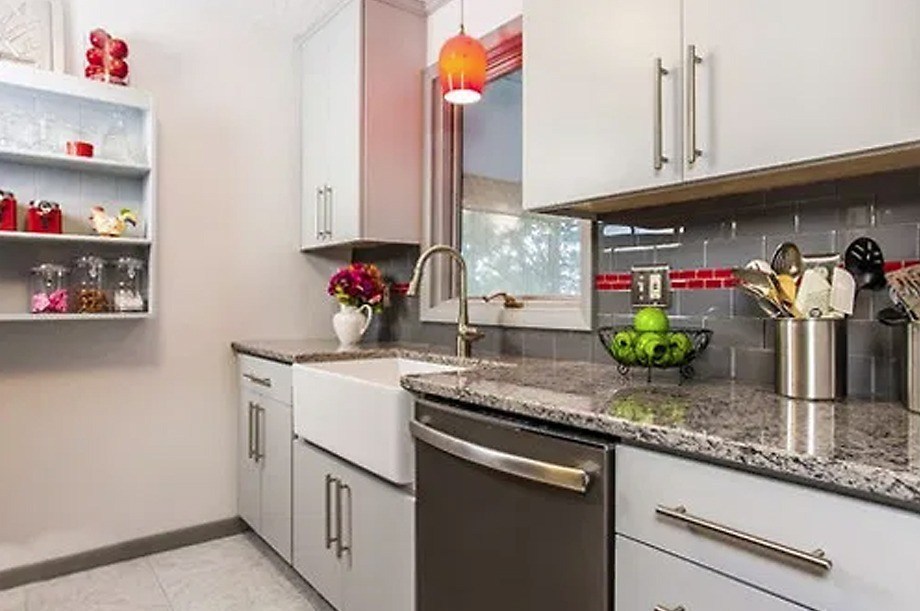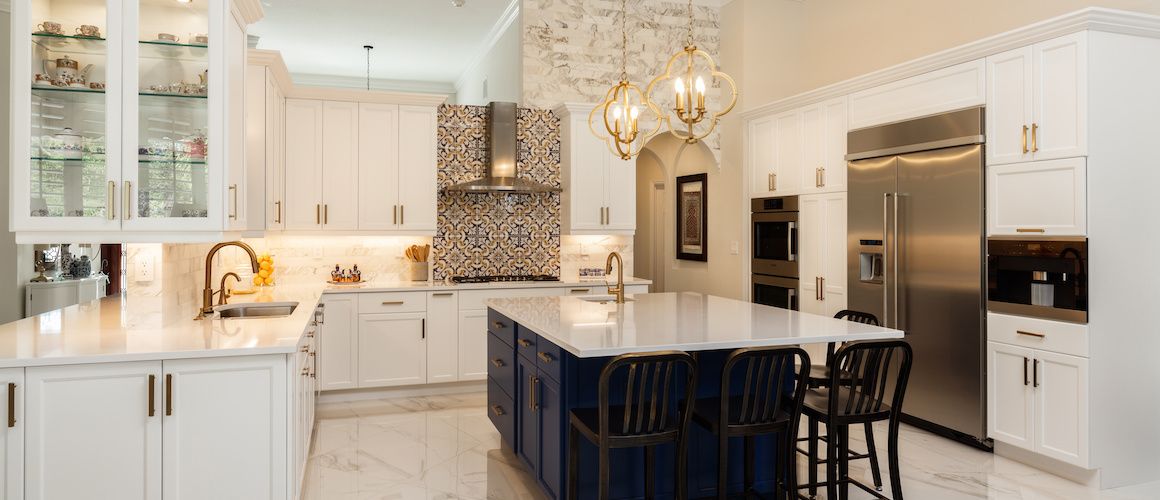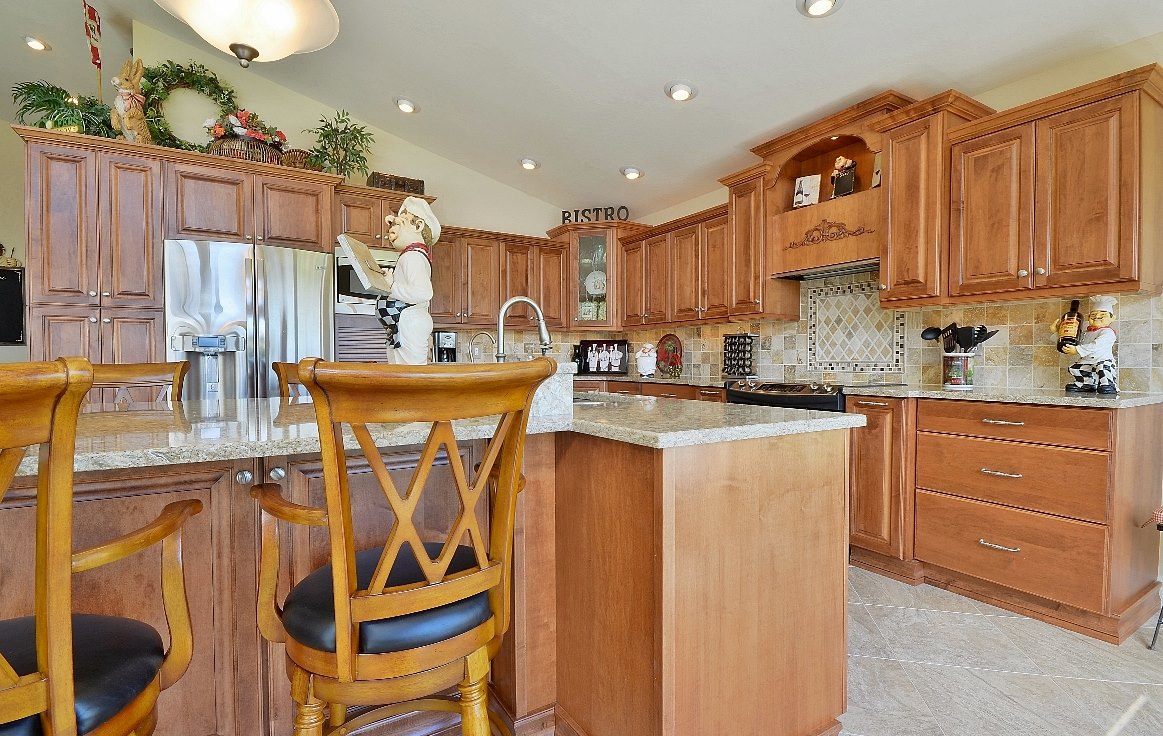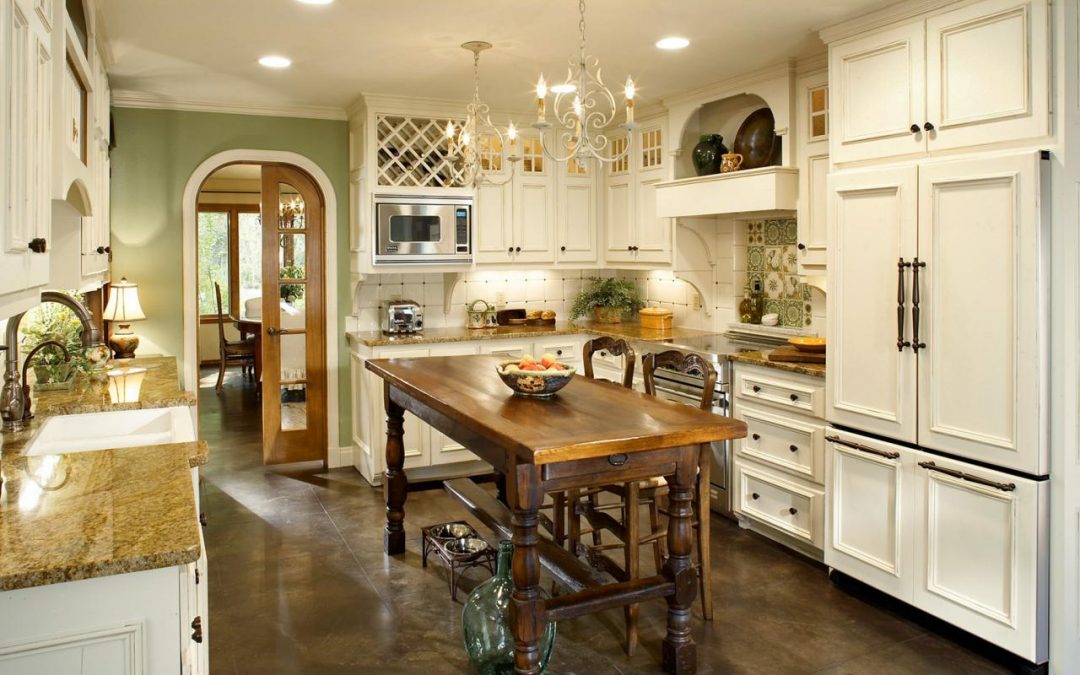Tips for Choosing a Kitchen Accent Color
Does your kitchen feel a little boring? Want to add some pizzazz to the design? A good kitchen accent color can turn a drab kitchen into a dramatic masterpiece, with minimal investment on your end. Here are some tips to help you choose the right accent for your kitchen.
What Is a Kitchen Accent Color?
Before we can provide tips for choosing an accent color, we need to explain what an accent color is. This is a pop of color that you can use to add personality to a kitchen. If you have an all-white kitchen or a space filled with neutrals, it can feel drab and boring. The kitchen all runs together, so there is nowhere for the eye to focus on. With the right kitchen accent color, you can direct a viewer’s eye around the room and create visual interest for the space.
Start with a Neutral Base
Having a neutral base will allow you to change your accent color over time. If you get bored with bright green, you can swap it out for a soft yellow. The neutral color pallet will remain the same, so you don’t have to completely remodel your kitchen. Greys, whites, browns and beiges can transition through many accent colors in the future. Think about that if you’re planning an upcoming kitchen remodel.
Choose a Kitchen Accent Color That Fits the Undertones of Your Neutrals
The rule is ‘neutrals go with anything,’ but that is not always the case. Most neutrals have an undertone, and that undertone can dictate which colors work well with them. Your accent color could accentuate or detract from your neutrals. For instance, a cool grey wall with a blue undertone may suddenly look blue with navy accents. A contrasting color like orange could also enhance the blue undertones.
Don’t Be Afraid to Go BOLD!
If you have a neutral base, you can go bold with your kitchen accent color. Candy apple red, bright green, cobalt blue – choose any bold color your heart desires. Your accent color is going to be the ‘pop’ in your kitchen. You can make that pop as loud or as quiet as you want it to be. Explore options on all ends of the spectrum before settling on an accent color.

The Step-By-Step Guide To Remodeling Your Kitchen
Since the kitchen is central to the home and commonly used by families, it’s one of the first things many house hunters look at. Whether you’re renovating your kitchen to help your home sell or to create the kitchen of your culinary dreams, there’s some planning and budgeting you’ll want to do first.
Determine Your Must-Haves
The first step when remodeling your kitchen is deciding what you really want. Similar to house hunting, this helps you narrow down the options and formulate a budget.
It can feel like the options for your kitchen are limitless, but unless you have a limitless budget, you’re going to have to pick and choose what’s actually important to you. Do you need more storage? Do you want more space for entertaining? Do you want a flow that works better for your family?
Set A Budget
Now that you know what you won’t budge on and what would just be nice to have, it’s time to create a budget.
How do you know what a realistic budget is for your kitchen renovation? A good rule of thumb is to spend 5% – 15% of your homes total value on your kitchen renovation. For example, if your house is valued at $200,000, a decent kitchen renovation budget would be 10% of that value, so about $20,000. Here are a few things you can do to get a more accurate budget and decide how much to allocate where.

Kitchen Remodeling: What Type Of Kitchen Cabinets Should You Choose?
Your kitchen cabinets should be the highlight of your kitchen, which means if they’re not looking their best, your kitchen could look dull and drab. If you’re thinking of undergoing a kitchen remodeling project, learn how to choose the best cabinets for your home. Knowing the difference between the styles, wood choices, stains and paints and hardware can help you choose kitchen cabinets that will look great (and keep you happy) for years to come.
Which Cabinet Style Best Fits Your Kitchen Remodeling Project
Which style fits your kitchen remodeling project? Are you looking for traditional, contemporary or mission style doors? Do you even know what that means? If you’re not an expert in kitchen cabinets, consider which types of doors you prefer.
Choosing The Right Wood For Your Kitchen Cabinets
The next choice you need to make is what type of wood that you want to use. Popular choices include cherry, maple, hickory, red oak, lyptus, rustic alder and white oak. Each wood type provides a unique look so you want to have a good idea of what you want your finished kitchen remodeling project to look like to make sure you’re choosing the right wood for your kitchen cabinets..
Selecting The Right Stain Or Paint
Choosing the right stain or paint should happen at the same time you’re choosing your wood type. Cherry stains, for instance, can range from a light stain that brings out the natural beauty of the wood, to a reddish brown, to a deep coffee color. At this time, you should decide whether you want a matte or satin finish and if you want any specialty touches, such as glazing, vintage or rustic looking finishes
Which Kitchen Cabinet Hardware?
Hardware is usually the last choice homeowners need to make. Hardware can include drawer pulls and door handles and the possibilities are nearly endless. Hardware comes in every style, from classic to modern to vintage, and it’s an affordable way update the look of your cabinets every few years. If you’re having a hard time choosing the right hardware for your kitchen remodel, consider buying one or two handles or pulls of multiple styles. This way you’ll be able to see which ones you prefer before you install them all on your kitchen cabinets and drawers.

KITCHEN REMODEL CHECKLIST
Whether you’re cooking, entertaining or just hanging out, kitchens attract a crowd. Remodeling your kitchen is a great way to update the most popular room in the house. Remodeling also gives you an opportunity to make a return on your investment.
Kitchen Remodel Tips
A kitchen remodel can be as simple as a fresh coat of paint and new floors, or a complete transformation with new appliances, cabinets and more. No matter the route you choose, planning helps you avoid costly, or surprising setbacks and keeps the project on time and on budget.
While you’re planning your kitchen remodel, decide what bothers you about your current kitchen and how your new space will correct these flaws. Maybe you need more storage near the oven, or you’re tired of hearing the kids slamming the cabinets shut.
Set a list of priorities and expectations.
What’s your big-picture goal: More space? Better design? Just new appliances?
When do you want the project to be finished?
Set a budget.
How much do you want to do: new appliances and more square footage, or just painted cabinets and a new fridge? Make the decision now before you start remodeling. Don’t forget budgeting for the little details, like the knobs on the new kitchen cabinets and dividers for new drawers.

How to Choose the Best General Contractor for Your Kitchen Remodeling Project
IMPORTANT CONSIDERATIONS FOR REMODELING YOUR KITCHEN
As a homeowner in Sonoma County, you have the luxury of choosing from the best General Contractor near you to consider. When it comes to kitchen remodeling, there are several things that you will want to consider when choosing among the best General Contractor that are right for you, especially when choosing the right kitchen remodeling contractor. With that said, as one of many local kitchen remodeling contractors in Sonoma County, it’s important you find a highly experienced contractor that really understands the ins and outs of kitchen remodeling that can also work within your budget and timeline.
Your kitchen is the primary space in your home that can get you the greatest return on your investment. According to a recent article published by Remodeling Magazine, the average ROI for a kitchen remodel is between 60-80% depending on the over-all condition of the home, in addition to other deciding factors. Not only is remodeling your kitchen a great return on your investment, but it makes a tremendous impact on the quality of life in your home such as family time, preparing meals together, and hosting holiday events throughout the year. Your kitchen can be the heart of your home and the one space that can really make the most positive impact in our lives when its remodeled. With features like pullout shelves for easy access to cabinets and countertops that are easy to clean. And lets not forget those wonderful features such as instant hot water dispensers for that quick morning coffee.
GORGEOUS KITCHEN DESIGN WITH MODERN FUNCTIONALITY
One of the things we often here time and time again is that the new kitchen is more functional. With clever designs, we can often take a poorly designed kitchen and remedy the problem of these outdated designs that often result in the lack of storage space, or hard to reach places. Our custom kitchen designs go beyond great looking cabinets. We’ll create a design that not only looks amazing, but will transform your kitchen into a highly functional space. Two great examples that we’ve done in many of our kitchen remodels is to remove a wall that often separates the kitchen from the dinning or living room. By removing the wall it creates a very open space that makes the space more functional and creates a “Great Room” that is perfect for entertaining guest or large family gathering such as Thanks-Giving or Christmas dinners. Another popular feature has been to add a center island which not only adds more seating capacity but allows family and guests to visit with you while you are preparing that amazing meal. We have often put a second sink in those center Islands giving you even more flexibility.
CHOOSING THE RIGHT KITCHEN REMODELING CONTRACTOR
When it comes to remodeling your kitchen there are many kitchen remodeling contactors to choose from in Santa Rosa or the surrounding areas. The best General Contractor for your kitchen remodeling project understands the intricate construction and design processes that go into building your dream kitchen. The comments below may be some things you will want to consider when deciding on the right contractor. The first rule of thumb is it is best to work with a local contractor that is part of your local community. You know the guy or gal that has had their kids or grand kids in little league with your kids or grand kids. The guy or gal that shops at the same stores you do and pays local taxes to help with the infrastructure of this great community. The contractor that understands what it feels like to live in a community that was threatened by the recent Tubbs and Kincade fires. In other words, Sonoma County is not just where we work, it’s where we choose to live because of its beauty and the beautiful people of this community.
WHAT YOU CAN EXPECT
It’s not easy to find the best General Contractor. We care about every little detail to make sure you get the design and functionality to create that kitchen you will be enjoying for many years to come. We start the process off with a personal on-site visit to take pictures of the current space, to take measurements down and most importantly to discuss with you the goals and vision you have to obtaining that perfect Kitchen. During our kitchen design consultation meetings, we will often discover space limitations our clients are experiencing and even uncover some issues that they didn’t know could be remedied. Then the fun begins! We point you in the right direction to begin looking at countertop options, appliances, flooring, and cabinet choices. It’s even a common practice for someone from our staff to meet you at our local stores to help you in making the right selection of products for your new kitchen. This practice has often saved a lot confusion or hassle. In short, you are not just getting a kitchen remodeling contractor in Sonoma County you are getting a design team that walks you through every step of the way.